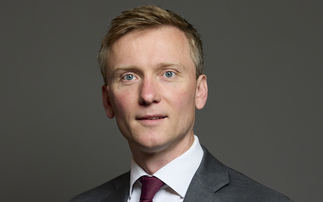
Key points
At a glance
- No framework or methodology can fully support what will be an individual journey for schemes
- Trustees must position themselves in a fresh way and foster a new relationship with asset managers
- Total commitment is needed to push schemes over their net-zero finish lines
The countdown to net zero is now well underway, Hope William-Smith take a look at how schemes are aligning with Paris Agreement goals.
There is little doubt that the Covid-19 experience has prompted a new surge in commitments to net-zero emissions targets. In the pensions space, these targets are perhaps the most vital step yet to come from the unanimous global concern over climate change, which first sparked the shift in ESG offerings from optional to crucial.
A majority of pension schemes and providers who committed to invest consistent with a pathway to net zero have chosen 2050 to align with the goals of the Paris Agreement. For defined benefit (DB) schemes, which still hold a meaty 81% of UK pension assets according to the Thinking Ahead Institute, the execution of net zero - and how trustees guide it - will have much wider implications than the rudimentary remit of paying members' pensions.
Yet many schemes still have a 15-year or longer endgame plan and are grappling with a host of challenges amplified and exacerbated by coronavirus. Sponsors are struggling, with two in three having posted profit warnings in 2020, disquiet on the terms of the funding code is rife, transfer values and times remain under pressure, and The Pensions Regulator's long-term funding approach is attracting criticism for stifling sponsors.
Managing operational costs has potentially never been more challenging than in the post-2020 economy, but net-zero targets, or clean portfolio goals on a similar pathway, are set to characterise the coming years as the nation pushes ahead with plans for a fully net-zero economy, in which pensions and financial inclusion minister Guy Opperman has promised that pension schemes will play a central role.
With these unprecedented shifts across the pensions world, a new age of collaboration between scheme trustees is being mapped out as the nitty-gritty of net-zero plans are laid down in the open.
Ambitious targets
In October 2018 the Asset Owners Disclosure Project noted as few as 10% of the 100 largest global pension funds had made formal commitments aligning with the goals of the Paris Agreement. Three of the nation's largest schemes, the Universities Superannuation Scheme (USS), the Railways Pension Scheme, and the Electricity Supply Pension Scheme, were called out for being "particularly disappointing". As the UK's largest DB scheme, the £60.5bn USS is yet to declare a net-zero commitment after a notably difficult several years marred by funding concerns, scheme member protests, and valuation delays. However, the scheme tells Professional Pensions that "net zero is under active discussion" for the future.
Arguably the most significant move from a DB scheme has been the ambitious goals set by the BT Pension Scheme. The £55bn scheme committed to a 2035 net-zero investment strategy last October, which will see a full reinvestment of the majority of its assets over the next 15 years.
Speaking at a Professional Pensions' webinar last month, BT chief executive Morten Nilsson said the scheme felt it "needed to action sooner rather than later" with portfolio risks becoming clearer and pressure from investors building.
Last October, the Northern Local Government Pension Scheme (LGPS) pool partnered with ethical pensions campaign Make My Money Matter and pledged to meeting net-zero carbon emissions by 2050, and even exploring the feasibility of a 2030 target.
But Northern LGPS - which coordinates the investments of some of the £46bn assets of the LGPS funds of West Yorkshire, Greater Manchester, and Merseyside - has faced a recent fallout from failed oil investments. December analysis from Transition Economies found the Greater Manchester Pension Fund incurred the largest loss, a total of 2.2% of total value equivalent to £1,000 per scheme member in three years after its investments in oil companies collapsed by half their original £3.6bn value.
Positive news is still ramping up however, after BP set its ambition to become a net-zero company by 2050, and the South Yorkshire Pensions Authority also confirmed its investment portfolios will be carbon neutral by 2030.
HSBC, Europe's second-largest financier of fossil fuels, said it would be net zero by 2050 at the latest, but was criticised for failing to commit to reducing its funding for fossil fuels, in particular coal, which has risen each year since 2016. The bank was placed under further pressure from a ShareAction-coordinated campaign by institutional investors in January, including LGPS pool Brunel Pension Partnership and the Merseyside Pension Fund.
The defined contribution (DC) side is on the move as well. Last month also saw Smart Pension commit to net zero and pledge to halve its emissions "significantly earlier" than the Paris Agreement deadline. DC savers will also benefit from the launch of owner Cushon's net-zero pension, the first of its kind. Carbon emissions in Aegon UK's default pension funds are also set to be slashed by half in the next nine years.
Formulating a plan
While there is no shortage of companies publishing net-zero targets there is not, as yet, a commonly agreed definition of net zero, labelled by not-for-dividend Carbon Trust as "an ambition in need of a definition".
A Pension Schemes Bill proposal that would have seen schemes forced into net-zero commitments was cut, but many schemes and their trustees facing the requirements of the Task Force on Climate-related Financial Disclosures (TCFD) are planning their disclosures with a net-zero focus in mind.

Redington managing director Carolyn Schuster-Woldan agrees DB schemes over £1bn are thinking of their TCFD reporting as "much more about net-zero targets" despite the first regulatory hurdle being just £5bn.
"This is driven partly by regulation, partly by engaged trustees themselves, and partly by sponsoring employers who themselves might have ambitious carbon goals," she says.
As such, a first step for many could include balancing the impact of investment in carbon-intensive businesses against other lower carbon investments within portfolios.
UN Principles for Responsible Investment climate change senior specialist Ed Baker says schemes should set "near-term targets" - a popular and subjective stepladder approach that Scottish Widows will also look to take on its net-zero journey.
Head of pension investments Maria Nazarova-Doyle says shorter-term targets, including halving carbon emissions in nine years, will be key to ensuring Scottish Widows' path to net zero is achievable.
Baker adds: "Set a target of achieving net-zero carbon emissions by a specific date and include indicators across the portfolio, such as a step-by-step plan to reduce exposure to fossil fuels, and then monitor and review it annually to then use those regular reviews to tweak the investment policies over time."
DC default funds are on a new pathway
Defined contribution (DC) schemes have generally offered members funds that incorporate ESG considerations as a self-select option, rather than being part of the default option. Take-up has therefore been low and disappointing, with only members who have a strong ESG view, or work in a specific industry where their employer has strong ESG credentials, making use of these funds.
One issue has been that a significant proportion of default funds have been passively managed, and index providers have not until recently provided products that could be used in a default investment strategy.
Now that there has been some product innovation in the passive investment arena, following the Paris Agreement, we are starting to see more trustees putting more focus on climate and broader ESG issues in their default funds.
Ray Martin is director at HS Sole Trustees
But frameworks for net zero differ significantly on the near and mid-term targets warns Goldman Sachs Asset Management EMEA ESG and sustainable investing strategist Claire Hedley. Frameworks should be used more as guidepost to steward a portfolio toward net zero and can provide flexibility for institutions to form their own opinions.
Schuster-Woldan says part of the early process may be evolving the definition of fiduciary duty, which could be outdated in light of net-zero objectives and related rules.
"Investing with specific impact objectives in mind is not typically how trustees of DB schemes have behaved in the past," she says.
Whatever schemes choose, Legal and General Investment Management head of DC Emma Douglas says trustees "are going to be relying heavily on their fund managers to deliver the right information so that they can digest it".
A 2050 net-zero target may even be irrelevant for schemes, says Kempen Capital Management head of investment strategy Nikesh Patel.

"If you are buying out in the next decade, why take investment steps that could create costs?" he says. "But even with such an extreme example, being a good steward might well translate to making it a requirement that any insurer that is selected is committed to net-zero. This too needs to be carefully managed in terms of potential or perceived conflicts between pricing and interpretations of fiduciary duty."
He adds a "perfect framework that seamlessly resolves every issue or covers all possible asset classes" is unlikely.
"There is a range of outstanding challenges and complexities between sectors and geographies in managing a portfolio towards net zero and assessing the alignment of assets."
Schemes with net-zero commitments shouldn't dawdle on their first steps and "can't afford to wait for a seamless process", he adds.
The "cheapest" way to oversee this net-zero transition is to engage as stewards, he suggests.
"Trustees, as asset owners, have tremendous influence. If they make it clear that their selection of advisors depends on those advisors having climate integrity, or that their fiduciary manager, or asset managers are committed to net zero, they will be taking a forceful view already."
Methodologies and targets
Forming a methodology is key in successfully managing a net-zero transition. As it stands in the UK, companies with a high-carbon footprint make up a significant part of mainstream indices and there is still limited information on the exact make-up of all investments.
A group effort from investment consultants and asset managers in line with the scheme's own climate change goals is crucial, while some smaller schemes may have to consider help from third parties.
"Risks don't go away based on scheme size," notes Willis Towers Watson head of sustainable investment manager research Amandeep Shihn. "Even for a small scheme, it's still important to be aware of the risks, understanding that there are different timelines, and they are in difference places in their asset allocation cycle."
While some specific blueprints - such as the Institutional Investors Group on Climate Change's (IIGCC) Net-Zero Investment Framework (NZIF) - can bolster pension funds, support is still high for schemes to take unique pathways.
As a developer of the NZIF, the 40,000-member Church of England Pension Scheme will use the blueprint to meet a 2050 net-zero target of its own.
"The challenge is to have a credible and transparent framework," says the scheme's pension board and IIGCC co-chair Adam Matthews.
"Setting a long-term, net-zero target is the easy part. This framework provides us with a basis to deliver that commitment". Setting a bespoke path will be popular in light of the varying stages of maturity among DB schemes, however, along with the uncertainties around how the DB funding code could alter current forecasting.
HSBC Asset Management head of institutional sales for UK and EMEA Maria Ryan agrees it is important all boards "determine a plan unique to their organisation".
"A sensible step for DB trustees to take now is to establish the necessary governance to understand both the external environment, including regulatory requirements and market conditions, as well as their own situation including the scheme's assets, liabilities and importantly the covenant of the sponsoring employer," she says.
"With this foundational information to hand, trustees may then consider what committing to a net-zero approach means for their scheme and how it supports their duty to provide benefits to the scheme's members over time."
Cardano deputy chief investment officer Keith Guthrie said the investment manager is reviewing public methodologies and using the government's commitment to 2030 emission reductions as a guide for its investments and communications.
"Next, pension funds can consider their current asset mix and ways in which they can allocate to more sustainable investments, for example, green bonds," he says. "Pension funds should also put in place ongoing measurement and scenario analysis."
Opperman says he expects scenario analysis - a major focal point of the TCFD requirements - will be conducted by trustees more frequently than the new requirement of every third year after the first year.
Ryan recommends a ‘journey plan' or ‘flight path' approach for trustees, which may be helpful and familiar to visualise the move toward net zero.
"A phased implementation permits schemes to modify their asset portfolios over time as they move to a net-zero approach to minimise costs and disruption," she says. "A traditional transition manager may be helpful to trustees to support coordination of the various portfolio changes which are required."
She adds that schemes should make sure they actively engage with their implementing asset managers to determine "which managers are capable of respecting the scheme's net-zero plan".
"Beyond any doubt, the first challenge is creating an understanding about what climate investing is and what it means for each part of a portfolio" adds AXA Investment Managers solutions strategist Bruno Bamberger.
"From a trustee perspective, it's then considering how you aggregate the impact of all of those aspects of your portfolio into one risk dashboard."
Switching from a liability-driven investment (LDI) strategy, where footprint is typically not measured, could be a key early move for schemes, says Schuster-Woldan.
"It's possible to get some data from index providers but schemes do also need to engage with managers and companies; green gilts may be an interesting area as it might be possible to incorporate green gilts into LDI portfolios depending on terms."
Switching into an index fund with a built-in carbon reduction or looking at actively managed sustainable mandates are also choices schemes should consider, as well as pushing for managers to build in carbon aware guidelines.
While illiquid assets are trickier as existing investments already have deployed capital, Schuster-Woldan notes schemes should consider what they can do when those assets start running off.
"For example, replace with more carbon reducing investments," she says. "Also new allocations that fit with risk/return objectives."
Schemes can also consider tools for measuring temperature alignment, which Hedley deems "critical" for monitoring net-zero progress.
"There are a number of design decisions for schemes on how to set and monitor targets, what metrics are most important, and how to remediate if things go off track," she explains. "Engagement is a huge part of this journey. The net-zero commitment is really about making progress in the real economy. That means thinking creatively about the variety of levers you can pull as a major investor to help companies decarbonise."
Compensating for carbon dioxide emissions comes with its own problems, however.

"The most optimistic Intergovernmental Panel on Climate Change projections make clear that the goals of Paris are unlikely to be achieved without offsetting/ carbon capture, so these activities will become part of the market," Schuster-Woldan says. "Carbon offsets don't offset the risk though, and therefore won't help UK pension schemes in their climate goals."
Nazarova-Doyle adds that mass carbon-offsetting schemes cannot be relied on by large providers to provide a "false sense of security".
"Action that drives change in the real economy is the only way we can achieve the net-zero goals," she adds.
Columbia Threadneedle Investments portfolio manager Pauline Grange says offsetting is like "a plaster on a bullet wound".
"We want to invest in businesses which are going to both deliver financial returns but also contribute a positive net impact towards net zero," she says. "You don't get that with carbon offsetting schemes".
Metrics and data
While it is clear that a lot of data is needed to accurately calculate the carbon footprint of a portfolio, Nilsson warns it is "critical" schemes do not use this as an excuse.
"You can wait for perfect data, and you might never get it," he said. "But I'm also sure the data is significantly improving all the time and we are getting more and better data."
AXA Investment Managers cashflow driven investment solutions strategist Sebastien Proffit agrees progress is already being made.
"At the moment, we don't have one single indicator that you can use, and that everyone is using, and the quality of data is not yet there," he says. "But by schemes doing due diligence and engaging with data providers, we can see a lot of progress very quickly which is good, and we need to all be ready to use a lot of different indicators."
However, trustees should be aiming to use "agreed and consistently applied data sources" to benchmark assessments of the existing assets in portfolios, Ryan adds. "This permits the trustees to establish a gap analysis between the current asset portfolio and a portfolio that achieves net zero in the specified time frame."
She continues: "Trustees may further recognise and agree with stakeholders that data sourcing is not static but may evolve over time as the variety and quality of data and metrics improves."
Schemes should recognise data limitations, Ryan warns, and adopt a pragmatic approach with relevant stakeholders to continuously facilitate the most consistent approach.
Nilsson said the BT scheme's early assessment of its metrics uncovered more than 80% of its emissions come from less than one fifth of companies.
"We have quite a strong concentration in certain utility sectors like oil and gas," he adds. "But metrics are also about assessing the reinvestment opportunities you have."
Inconsistencies are still common on all sides, however.

Cushon chief executive and founder Ben Pollard says only one of the three fund managers the fintech works with knew the carbon emission levels of their funds.
"This lack of data coupled with a lack of innovation in the industry is a key part of the problem but waiting for investment managers to catch on is not an option," he says.
Pollard adds Cushon achieved its new net-zero pension without compromising investment returns by stripping back as much carbon emissions using "off the shelf " solutions currently available from its fund managers. The remainder is offset at Cushon's expense.
Columbia Threadneedle Investments is working with internally built carbon foot printing approaches in its journey.
"We have some standard carbon metrics which we report on - not just looking at the footprint per dollar invested - but also other metrics like carbon intensity," Grange explains.
Engaging for change: The decade of action
Global momentum is gathering pace and we are seeing an increasing number of countries adopt net-zero emission targets, but we have now entered the decade of action rather than ambition. Many pension schemes are also setting their own targets and commitments in relation to climate change and it's clear that pension assets are seen as a significant component in supporting a sustainable future.
One of the biggest challenges facing trustees will be getting the right data to help them understand the nature of climate-related risks and meaningfully challenge their asset managers. Managers should be able to provide information on the carbon footprint of a portfolio as well as the overall exposure to carbon-related assets. However, much of this data is currently backward-looking so may not fully take into account how companies are transitioning.
Therefore, I'd also encourage trustees to challenge their asset managers on engagement and voting programmes to determine how effectively climate change is being considered. All of this information can then be used to help trustees formulate their own targets and implement key metrics as schemes formally adopt the ‘net-zero challenge'."
Ryan Medlock is senior intermediary development and technical manager at Royal London
Whatever approaches are being taken now, schemes and asset managers need to consider the metrics being looked at today will not be the same in five years' time, Bamberger notes.
"They will be either a different breath or a different depth of metrics that we're looking at now. Asset managers need to be appreciative that client's needs are evolving and respond to those."
A new relationship
After establishing a climate framework, it is vital to measure, monitor and disclose progress through an even stronger collaboration than schemes and managers have known before.
"Schemes can also learn a lot from their peers and other industry participants," Hedley notes. "Documenting and sharing lessons helps everybody move faster."
Net-zero commitments will "mark shift in the relationship between trustees and asset and investment managers" Douglas adds. "Trustees will need to know some of the more detailed levels of exactly what's going on in the portfolio."
This is particularly important on an active ownership level and under trustees' new TCFD obligations to have an appropriate degree of "knowledge and understanding" of the principles relating to climate change risks and opportunities.
"As a trustee, you're actually holding shares in a lot of companies so ask yourself what you are doing with those shares and how you are really voting those shares," Douglas says.
"Trustees need to get the right information from their fund managers here - they are the decision makers of where they're putting the money."
Building a new relationship on the intricacies of a path not yet taken is not an overnight process, Douglas warns.

"Trustees are going to have to just wait and work through that. Equally, they can put pressure on managers, and from their perspective, it's about building the right reporting."
Relationship building can also see schemes better engage their managers on climate risks and opportunities from their perspective, Guthrie suggests. "Use the natural turnover of managers to make progress on sustainability," he adds. "New managers can be expected to meet higher climate change standards."
Sharing the goal
Most crucial to all schemes' success will be the diligence with which the environment around schemes, including pension savers, policymakers, and government, can harmonise their thinking on a green economic recovery for the future.
The government's much-vaunted ‘10 Point Plan' green recovery plan - promising a multi-billion-pound package of investment across the green economy - was announced in November.
The changes are key to the UK achieving its 2050 net-zero target with chancellor Rishi Sunak also unveiling the UK's first sovereign green bond.
Experts say demand for green UK sovereign bonds will be high as pension schemes seeing them as a much-needed response to a growing demand for investments that help secure their net-zero goal.
Adequate green bond assessments will be crucial as these options increase, Bamberger warns. "All schemes need to be careful to consider greenwashing, and that probably starts with green bond assessment, because they will be a heavy part of a climate aware strategy," he says.
"You really need to consider when you're looking at each of your green bonds and your climate solutions and ask if they are tangibly contributing to the transition into a low carbon economy."
If a green bond issuer does not have a robust decarbonisation plan, the schemes need to consider whether it counts, Bamberger adds.
Nilsson agrees there is "a very big need for collaboration".
"I firmly believe that if we work together as asset owners and work across the industry, we can apply pressure on politicians, and we can apply pressure on companies," he says.
Pollard notes the importance of fighting a double-edged sword. "The more we save into our pensions, the more harm we are inadvertently doing to our planet and it's critical these two issues work together not against each other."
Grange explains it is not just about looking at contributions today, but "intentionality and how you may look going forward".

"You can easily lower your footprint by investing only in tech, but that's not really going to address the problems we face as a society," she adds.
Ultimately, as an industry holding trillions of pounds worth investments, Nazarova-Doyle concludes that pensions can indeed play the game-changing role being asked of them.
"Pensions can support the global economy's transition to a low carbon future, all while earning sustainable returns for savers," she concedes.
"We are making steady progress as an industry, but it's not fast enough. The reality is we still have a very long way to go to close the green gap to net zero."








